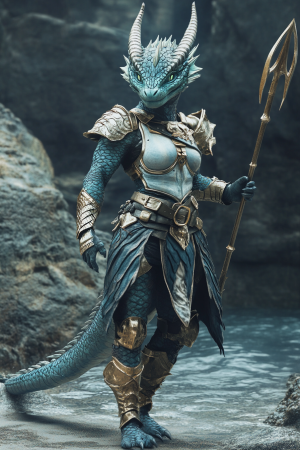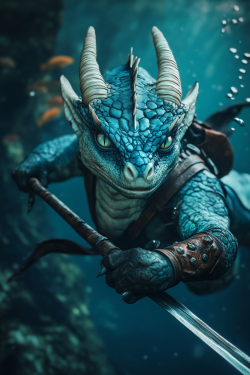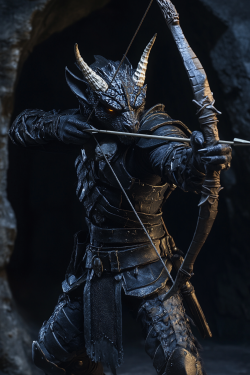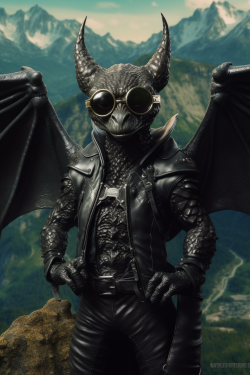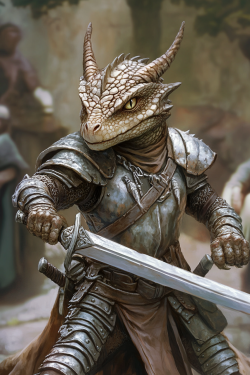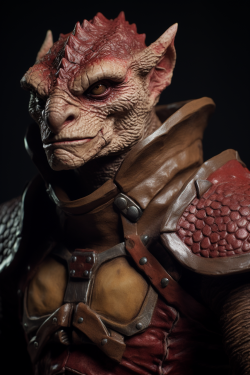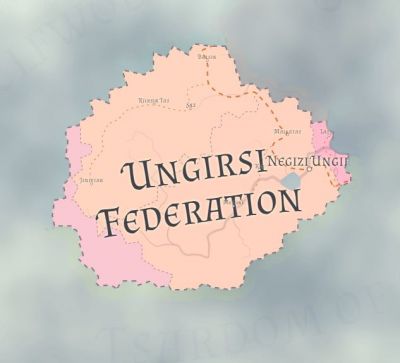Difference between revisions of "Ungir"
| (48 intermediate revisions by the same user not shown) | |||
| Line 1: | Line 1: | ||
| − | {{Infobox | + | {{Infobox strain |
| − | | title = | + | | title = Ungir |
| − | | image = | + | | image = UngirFighter.png |
| − | | caption = | + | | caption = An Ungir fighter ready for battle |
| − | | | + | | strain = Ungir |
| − | + | | substrains = [[Ustinde]], [[Karangi]], [[Usatin]], [[Juzuu]] | |
| − | + | | patron_deity = [[Wodenism]] ([[Jormungandr]]) | |
| − | + | | eyesight = [[Lowlight]] | |
| − | + | | hearing = | |
| − | | patron_deity = [[ | + | | smell = |
| − | | | + | | lifespan = 50-120 years |
| − | | | + | | location = [[Ungirsi Federation]] |
| − | | | + | | language = [[Otani language|Otani]], [[Ungirsi language|Ungirsi]] |
| − | | lifespan = | + | | climate = Moderate |
| − | | location = | + | | terrain = Caves, Tunnels, Hills, Mountains, Forests, Cities |
| − | | language = [[ | + | | height = 3'-4' (91-122 cm) |
| − | + | | weight = 45-65 lb (20-30 kg) | |
| − | | climate = | + | | wingspan = 5' (1.5m) (if wings are present) |
| − | | terrain = Forests | + | | skin_color = Various |
| − | | height = | + | | hair_color = Various |
| − | | | ||
| − | | wingspan = | ||
| − | |||
| − | | skin_color = | ||
| − | | hair_color = | ||
| feathers = | | feathers = | ||
| − | | eye_color = | + | | eye_color = Various |
| − | | build = | + | | build = Slight |
| − | | distinctions = | + | | distinctions = Draconic facial features, scaly skin, and talon-like feet |
| − | | | + | | dispositions = [[Hoarding]] |
| − | |||
| − | |||
| − | |||
| − | |||
| − | |||
}} | }} | ||
| − | + | The [[Ungir]] (🔊 Un-geer) are, for the most part, a highly gregarious and industrious people with a penchant for exploring the underground. Their origins come from a combination of human and draconic ancestry with mixtures of different flavors of [[Aydahar]] lineage as well. Over time the result of this great mélange of genetic experimentation lead to the current [[Ungir]], plus a few variants. | |
| + | |||
| + | Variations of [[Ungir]] can range from timid to aggressive, inward to gregarious, yet most remain industrious. One will rarely find an [[Ungir]] who is not working on a project, be it a tunnel, a building, or nearly any enterprise imaginable. They are particularly noteworthy for their skill at building traps and preparing ambushes, and digging tunnels, the latter most often for the purposes of mining. | ||
==Description== | ==Description== | ||
| − | + | The [[Ungir]] appear to be very short and slight humans, with draconic or perhaps reptilian looking features. They stand between 2' and 3' (60cm – 90cm) tall, weighing 35 to 45 pounds (16 – 20kg). They have a small number of scales occurring on the hands and feet with scaly spots appearing on various locations all over their bodies. The skin and scale colors vary with the variant of [[Ungir]], but the two colors are rarely much different. | |
| + | |||
| + | Compared to humans, their hands have considerably more robust claw-like nails, which adapt them to digging by hand (though they rarely dig this way). They also possess a crocodilian jaw which gives away their draconic ancestry. On the back of their heads, they posses anywhere from two to four small white or tan horns and lastly they possess short dragon-like tails. Their tails are prehensile, but very few [[Ungir]] can manage tasks with their tails that require much dexterity. | ||
| + | |||
| + | ==Racial Variants== | ||
| + | |||
| + | ===[[Juzuu]]=== | ||
| + | [[File:Juzuu.png|left|250px|A [[Juzuu]] aquatic [[Ungir]].]] | ||
| + | The [[Juzuu]] (🔊 Joo-zoo-oo) are an aquatic variety of [[Ungir]] who are very rare indeed. They sport gills enabling them to live underwater indefinitely, which is inaccessible to many adventuring parties. Even in their underwater realms, however, they naturally seek to tunnel and build their abodes in underwater underground caves and tunnels. | ||
| + | <br style="clear: both;"> | ||
| + | |||
| + | ===[[Karangi]]=== | ||
| + | [[File:Karangi.png|left|250px|A [[Karangi]] dark [[Ungir]].]] | ||
| + | The [[Karangi]] (🔊 Kare-rahn-jee) are a dark-featured variety of the [[Ungir]] who prefer be continuously underground. | ||
| + | <br style="clear: both;"> | ||
| + | |||
| + | ===[[Usatin]]=== | ||
| + | [[File:Usatin.png|left|250px|An [[Usatin]] flying [[Ungir]].]] | ||
| + | Depending on the family line, roughly one in every dozen [[Ungir]] produce an [[Usanin]] (🔊 Oo-sah-tin). Regardless of their coloring or previous bloodline, they will differ fundamentally by having developed a fully articulated pair of wings. Even as infants, these natural-born tunnellers will seek the surface and take to the air like birds. They quickly attain a mastery of flight that rivals, if not exceeds that of any other sapient avians on [[Otan]]. | ||
| + | |||
| + | <br style="clear: both;"> | ||
| − | === | + | ===[[Ustinde]]=== |
| − | + | [[File:Ustinde.png|left|250px|An [[Ustinde]] surface [[Ungir]].]] | |
| + | The [[Ustinde]] (🔊 Oo-stin-day) are the surface-dwelling [[Ungir]] most commonly known to other races. | ||
| + | <br style="clear: both;"> | ||
| − | == | + | ===[[Half-Ungir]]=== |
| + | [[File:Half-Ungir.png|left|250px|An [[Half-Ungir]].]] | ||
| + | Half-Ungir | ||
| + | <br style="clear: both;"> | ||
| + | |||
| + | ==Ungir in Otan== | ||
| + | [[Ungir]] are closely related to the draconic [[Aydahar]] creatures, intelligent and humanoid. Perhaps due to their diminutive size, they lacked the authoritative nature of their [[draconic blood]]ed cousins. Finding it difficult to live in and amongst them, they broke with the draconic nation of [[Aydahar Confederation]] and sought lands to the north, where they formed their own [[Ungirsi Federation]] consisting mostly of themselves and what dragons would follow them to their new land. | ||
===Geography=== | ===Geography=== | ||
| + | The [[Ungirsi Federation]] is a nearly landlocked nation bordered to the northwest by the elven nation of [[Ælfwode]], to the northeast by the [[Grendel]] nation of [[Grendland]] and the south by the [[human]] nation of [[Ortalyk]]. | ||
| + | |||
| + | The capitol, [[Negizi Ungir]] is near the short stretch of [[Ungirsi Federation|Ungirsi]] coast that separates the [[human]] and [[Grendel]] nations. | ||
| + | |||
| + | [[File:UngirsiMap.JPG|thumb|400px|link=Ungirsi Federation|A map of the Ungirsi Federation]] | ||
===History=== | ===History=== | ||
| + | [[file:UngirRaid.png|thumb|600px|Ungirsi after a successful looting]] | ||
| + | For most of the [[In Memoriam|IM]] Era [[Ungir]] of the [[Ungirsi Federation]] have been at war with [[Human]]s, [[Ælf]]es, and the other 'soft skinned' humanoids, largely under the prompting and direction of [[Zoranthar Zhanat]], currently of the [[Council of Nine]]. | ||
| + | |||
| + | Before the council, [[Zoranthar Zhanat]] had concluded that [[Grendel]], [[Ungir]], [[Kuulik]] and the like had been unfairly oppressed by their humanoid brethren and even marked for extermination. Far from accepting this genocide, [[Zoranthar Zhanat]] imagined he could turn the tables and bring about a renaissance for the [[Grendel]] (and [[Ungir]]) kind. | ||
| − | |||
===Relations=== | ===Relations=== | ||
| − | + | Ungirsi hold a deep racial hatred for nearly all other [[humanoid]] races and enjoy killing and torturing them, in particular [[Sweardælf]]es, [[pixie]]s and [[sprite]]s. | |
| − | + | ===Notable Ungirsi=== | |
| − | + | * [[Daniar Erbolat]] - [[Fire Boss of the Ungirsi Federation]] | |
| − | ===Notable | ||
==Personality== | ==Personality== | ||
| − | + | Ungirsi were resentful of their short stature and hated members of other races who poked fun at them for this. Most felt as though they ought to compensate for their small size in other ways, such as humor or aggression. They would naturally tend to hate larger creatures, and although they would show respect and obedience if required, they always looked for ways to display their resentment. | |
| − | The ultimate goal of the | + | The ultimate goal of the Ungir race was to conquer as much land as possible. They would plan and dig mines industriously, while laying cruel traps for interlopers, preferring an ambush to direct confrontation. If they ever confronted an enemy, they would try to overwhelm foes with sheer numbers. Among the monstrous humanoids, they were known for cunning plans, and unlike many others, would also share those plans among the entire tribe. General plans and goals would be common knowledge, and detailed plans were shared with all who asked to allow them to work fruitfully for the good of the tribe. Their society was influenced by their [[lawful evil]] alignment. |
| − | + | Ungirsi were confident and happy to remain separated from the other races. A Ungir saying stated: | |
<blockquote>The dragon scale toughens our skin. The dragon bone adorns our skull. The dragon heart flames our sorcery. We are the dragon, and for the dragon we live. Long live the dragon.</blockquote> | <blockquote>The dragon scale toughens our skin. The dragon bone adorns our skull. The dragon heart flames our sorcery. We are the dragon, and for the dragon we live. Long live the dragon.</blockquote> | ||
| − | Where other races considered heroes to be those who enact great feats of strength or military prowess, | + | Where other races considered heroes to be those who enact great feats of strength or military prowess, Ungir heroes were those who showed great prowess in trap setting, torture and ambush. |
==Biology== | ==Biology== | ||
===Reproduction=== | ===Reproduction=== | ||
| − | + | Ungirsi were extremely fecund egg-layers, having the highest birth rate among humanoids. A pregnant female would lay her egg within two weeks. About one in ten pregnancies led to two eggs. An egg needed incubation for about two months, but the newly hatched Ungir could walk in just hours. The eggs were particularly sturdy, and the young inside could survive even if the egg broke as much as fifteen days early. Ungir young matured quickly, having reached young adulthood in six years. They often laid eggs in a common nest, with specialized foster parents watching over the eggs and [[wyrmling]]s. | |
| + | |||
| + | Some rare Ungir children were [[Dragonwrought Ungir|dragonwrought]], and it was possible to tell this because the egg would be speckled with flecks of the dragon's color, which became more numerous throughout the incubation period. These Ungirsi possessed wings like those of a [[dragon]], and some were of enough use to allow flight. Ritual demanded that the egg be taken to a sacred hatching place, and dragonwrought Ungirsi would be raised above ground if they were able to fly, so that they could learn to use their wings. | ||
| − | |||
===Shedding=== | ===Shedding=== | ||
| − | Like other reptiles, | + | Like other reptiles, Ungirsi shed their skin periodically. A growing Ungir might do this as frequently as weekly, but a developed one usually shed once per season. Unlike snakes, Ungirsi did not shed their entire skin at once; they instead shed portions of it over a period of time, much like lizards do. The process was usually accelerated by rubbing. [[Bitterleaf]] was often applied after shedding to help the new scales acquire strength and shine. |
| − | |||
==Combat== | ==Combat== | ||
| − | + | Ungirsi used their cunning and sheer weight of numbers to defeat enemies. They preferred to lay traps or ambushes, and would only engage a foe directly after it was weakened. If their numbers were diminished such that they had less than a two-to-one advantage, the group would usually flee. Ungir traps included spike pits, tripwires, flaming oil, and poisonous vermin. They disliked gnomes to such an extent that they would attack on sight. | |
| − | + | Ungirsi would usually loot what treasure they could carry from their defeated enemies, who were usually killed. Occasionally, Ungirsi would enslave their foes, who then might be sold on, unless they were gnomes, which Ungirsi would always kill, but never eat. | |
==Society== | ==Society== | ||
| − | + | Ungirsi lived in the dark, ideally underground or thick forest, in tribal societies. Their lairs were often overcrowded, although when one tribe became too numerous, it split into numerous smaller ones. The overcrowding eliminated the concept of privacy, so Ungirsi slept in communal areas where nudity was not regarded as shameful or offensive, even to the opposite sex. Ungirsi wore clothing for function or ritual, but not to prevent nudity. The common overcrowding often led to conflict, and two Ungirsi would fight to settle their differences, although these fights were not usually lethal. This led to a lack of deep-rooted divisions or grievances in Ungir society. | |
They were respectful of authority figures, and would obey diligently, particularly when their ruler was of [[lawful evil]] alignment. | They were respectful of authority figures, and would obey diligently, particularly when their ruler was of [[lawful evil]] alignment. | ||
| − | + | Ungirsi had specialized laborers, yet the majority of Ungirsi were miners. They possessed [[darkvision]] and were particularly sensitive to bright light. Ungirsi preferred exile to execution, and in some disputes, Ungirsi would split tribes in order to spread their kind over a larger region. | |
| + | |||
| + | Ungirsi had natural tendencies towards sorcery. They could live up to 135 years, and [[Dragonwrought Ungir|dragonwrought]] even longer. Ungirsi were similar to dragons, but while dragons had warm blood, Ungirsi were cold-blooded. Due to this, they were susceptible to cold, especially if it was brought on quickly. They enjoyed swimming and would gather to bathe together, especially after shedding (see below). Ungirsi would take a lot of care maintaining their claws and teeth, using smooth stones to polish claws and chewing roots to clean teeth. | ||
| − | It was unknown how | + | It was unknown how Ungirsi were of dragon heritage. While each Ungir valued its own life, the tribe came first. They considered the success of their tribe to be their own success. |
===Mating=== | ===Mating=== | ||
| − | + | Ungirsi did not maintain monogamous relationships, and due to the importance they placed on propagation, they chose mates by practical measures rather than love or other emotions. Mating was an impersonal act for Ungirsi. | |
===Language=== | ===Language=== | ||
| − | + | Ungirsi spoke [[Yipyak]], a version of the [[Draconic language]], with a yipping accent. Some could also speak [[Undercommon]]. According to [[Monster Manual 1st edition]] D&D Ungirsi could speak [[goblin language|goblin]] and [[orcish]], as they were considered a [[goblinoid]] race. Over the past few editions it has gradually taken on more reptilian characteristics until [[Monster Manual 3rd edition]] stated definitively that they are indeed reptilian subtype. | |
===Mining=== | ===Mining=== | ||
| − | + | Ungirsi often created their lairs by mining them from the rock. Mining was a meticulously planned and conducted process where nothing was left to chance. [[Divination]] magic was used to locate ore and mineral deposits. A high proportion of a Ungir tribe were miners. Each family group was expected to cut its own room, the walls of which they would adorn with a pictorial history of the family. | |
===Crafting=== | ===Crafting=== | ||
| − | The greatest art for | + | The greatest art for Ungirsi was trapmaking. The use of invention and cunning in traps was the mark of a good trapmaker. The other art form was the pictorial representation of the tribe's history, created on the walls of a specially created room in every lair. Ungirsi enjoyed making jewelry from the gems and precious metals they encountered while mining. They could be possessive about their personal jewelry collections, and much effort was put into crafting beautiful jewelry, unlike other items, which were functional rather than aesthetically pleasing. |
===Fashion=== | ===Fashion=== | ||
| − | Most | + | Most Ungirsi were miners and so dressed in sleeveless tunics and [[breeches]]; but Ungirsi enjoyed dressing in more elegant clothing for festivities. These included clothes made from silk or leather, but tailored clothes were only common among leaders. Garments were often made to compliment the wearer's eyes, which involved the use of orange or red dyes. Other garments might be dyed to demonstrate the wearer's affinity to a particular kind of dragon. Ungirsi required the dexterity in their feet too often to wear footwear, and the soles of their feet were hard enough to cope with most surfaces. Due to the amount of time Ungirsi spend mining, gemstones were readily available, and they used these to adorn their clothing, and to make jewelry. |
===Religion=== | ===Religion=== | ||
| − | The main deity of the | + | The main deity of the Ungirsi was [[Kurtulmak]], the god of war and mining, who hates all living things besides their kin. A main part of their religion was to seek out magic items that they believed may help free Kurtulmak from his eternal prison. The other main god worshiped by the Ungirsi was [[Gaknulak]], the god of protection, stealth, trickery and traps. A lesser-known Ungir demigod was [[Dakarnok]]. The remainder of the Ungir pantheon was comprised of deified Ungir heroes. |
| − | + | Ungirsi were also known for serving dragons and praising them as gods. A Ungir tribe would present a dragon with tributes and sacrifices and whatever they thought it may like; they might have even seen it as a great honor to be devoured by the creature. If a Ungir tribe was not accepted by a dragon they might start working for it in secret. Once a tribe settled to serve a dragon, their entire existence was to serve their god in every way. | |
===Diet=== | ===Diet=== | ||
| − | + | Ungirsi were omnivorous, eating plants and animals, but would not refuse to eat intelligent creatures if the opportunity presented itself. They were able to eat just about anything when the situation became desperate, even tree bark or bone. Due to their cold-blooded nature, Ungirsi that had spent time in a warm place would not need to eat for days. | |
| − | |||
| − | |||
| − | |||
| − | |||
| − | |||
| − | |||
| − | |||
{{Copyright notice}} | {{Copyright notice}} | ||
| − | [[Category: | + | [[Category:Ungir]] |
[[Category:Humanoids]] | [[Category:Humanoids]] | ||
| − | [[Category:Creatures | + | [[Category:Draconic Creatures]] |
| − | [[Category: | + | [[Category:Player Races]] |
| − | |||
| − | |||
| − | |||
| − | |||
| − | |||
| − | |||
Latest revision as of 21:45, 23 May 2023
| Strain | Ungir |
|---|---|
| Substrains | Ustinde, Karangi, Usatin, Juzuu |
| Patron Deity | Wodenism (Jormungandr) |
| Eyesight | Lowlight |
| Lifespan | 50-120 years |
| Location | Ungirsi Federation |
| Language | Otani, Ungirsi |
| Climate | Moderate |
| Terrain | Caves, Tunnels, Hills, Mountains, Forests, Cities |
| Height | 3'-4' (91-122 cm) |
| Weight | 45-65 lb (20-30 kg) |
| Wingspan | 5' (1.5m) (if wings are present) |
| Skin Color | Various |
| Hair Color | Various |
| Eye Color | Various |
| Build | Slight |
| Distinctions | Draconic facial features, scaly skin, and talon-like feet |
The Ungir (🔊 Un-geer) are, for the most part, a highly gregarious and industrious people with a penchant for exploring the underground. Their origins come from a combination of human and draconic ancestry with mixtures of different flavors of Aydahar lineage as well. Over time the result of this great mélange of genetic experimentation lead to the current Ungir, plus a few variants.
Variations of Ungir can range from timid to aggressive, inward to gregarious, yet most remain industrious. One will rarely find an Ungir who is not working on a project, be it a tunnel, a building, or nearly any enterprise imaginable. They are particularly noteworthy for their skill at building traps and preparing ambushes, and digging tunnels, the latter most often for the purposes of mining.
Description[edit]
The Ungir appear to be very short and slight humans, with draconic or perhaps reptilian looking features. They stand between 2' and 3' (60cm – 90cm) tall, weighing 35 to 45 pounds (16 – 20kg). They have a small number of scales occurring on the hands and feet with scaly spots appearing on various locations all over their bodies. The skin and scale colors vary with the variant of Ungir, but the two colors are rarely much different.
Compared to humans, their hands have considerably more robust claw-like nails, which adapt them to digging by hand (though they rarely dig this way). They also possess a crocodilian jaw which gives away their draconic ancestry. On the back of their heads, they posses anywhere from two to four small white or tan horns and lastly they possess short dragon-like tails. Their tails are prehensile, but very few Ungir can manage tasks with their tails that require much dexterity.
Racial Variants[edit]
Juzuu[edit]
The Juzuu (🔊 Joo-zoo-oo) are an aquatic variety of Ungir who are very rare indeed. They sport gills enabling them to live underwater indefinitely, which is inaccessible to many adventuring parties. Even in their underwater realms, however, they naturally seek to tunnel and build their abodes in underwater underground caves and tunnels.
Karangi[edit]
The Karangi (🔊 Kare-rahn-jee) are a dark-featured variety of the Ungir who prefer be continuously underground.
Usatin[edit]
Depending on the family line, roughly one in every dozen Ungir produce an Usanin (🔊 Oo-sah-tin). Regardless of their coloring or previous bloodline, they will differ fundamentally by having developed a fully articulated pair of wings. Even as infants, these natural-born tunnellers will seek the surface and take to the air like birds. They quickly attain a mastery of flight that rivals, if not exceeds that of any other sapient avians on Otan.
Ustinde[edit]
The Ustinde (🔊 Oo-stin-day) are the surface-dwelling Ungir most commonly known to other races.
Half-Ungir[edit]
Half-Ungir
Ungir in Otan[edit]
Ungir are closely related to the draconic Aydahar creatures, intelligent and humanoid. Perhaps due to their diminutive size, they lacked the authoritative nature of their draconic blooded cousins. Finding it difficult to live in and amongst them, they broke with the draconic nation of Aydahar Confederation and sought lands to the north, where they formed their own Ungirsi Federation consisting mostly of themselves and what dragons would follow them to their new land.
Geography[edit]
The Ungirsi Federation is a nearly landlocked nation bordered to the northwest by the elven nation of Ælfwode, to the northeast by the Grendel nation of Grendland and the south by the human nation of Ortalyk.
The capitol, Negizi Ungir is near the short stretch of Ungirsi coast that separates the human and Grendel nations.
History[edit]
For most of the IM Era Ungir of the Ungirsi Federation have been at war with Humans, Ælfes, and the other 'soft skinned' humanoids, largely under the prompting and direction of Zoranthar Zhanat, currently of the Council of Nine.
Before the council, Zoranthar Zhanat had concluded that Grendel, Ungir, Kuulik and the like had been unfairly oppressed by their humanoid brethren and even marked for extermination. Far from accepting this genocide, Zoranthar Zhanat imagined he could turn the tables and bring about a renaissance for the Grendel (and Ungir) kind.
Relations[edit]
Ungirsi hold a deep racial hatred for nearly all other humanoid races and enjoy killing and torturing them, in particular Sweardælfes, pixies and sprites.
Notable Ungirsi[edit]
Personality[edit]
Ungirsi were resentful of their short stature and hated members of other races who poked fun at them for this. Most felt as though they ought to compensate for their small size in other ways, such as humor or aggression. They would naturally tend to hate larger creatures, and although they would show respect and obedience if required, they always looked for ways to display their resentment.
The ultimate goal of the Ungir race was to conquer as much land as possible. They would plan and dig mines industriously, while laying cruel traps for interlopers, preferring an ambush to direct confrontation. If they ever confronted an enemy, they would try to overwhelm foes with sheer numbers. Among the monstrous humanoids, they were known for cunning plans, and unlike many others, would also share those plans among the entire tribe. General plans and goals would be common knowledge, and detailed plans were shared with all who asked to allow them to work fruitfully for the good of the tribe. Their society was influenced by their lawful evil alignment.
Ungirsi were confident and happy to remain separated from the other races. A Ungir saying stated:
The dragon scale toughens our skin. The dragon bone adorns our skull. The dragon heart flames our sorcery. We are the dragon, and for the dragon we live. Long live the dragon.
Where other races considered heroes to be those who enact great feats of strength or military prowess, Ungir heroes were those who showed great prowess in trap setting, torture and ambush.
Biology[edit]
Reproduction[edit]
Ungirsi were extremely fecund egg-layers, having the highest birth rate among humanoids. A pregnant female would lay her egg within two weeks. About one in ten pregnancies led to two eggs. An egg needed incubation for about two months, but the newly hatched Ungir could walk in just hours. The eggs were particularly sturdy, and the young inside could survive even if the egg broke as much as fifteen days early. Ungir young matured quickly, having reached young adulthood in six years. They often laid eggs in a common nest, with specialized foster parents watching over the eggs and wyrmlings.
Some rare Ungir children were dragonwrought, and it was possible to tell this because the egg would be speckled with flecks of the dragon's color, which became more numerous throughout the incubation period. These Ungirsi possessed wings like those of a dragon, and some were of enough use to allow flight. Ritual demanded that the egg be taken to a sacred hatching place, and dragonwrought Ungirsi would be raised above ground if they were able to fly, so that they could learn to use their wings.
Shedding[edit]
Like other reptiles, Ungirsi shed their skin periodically. A growing Ungir might do this as frequently as weekly, but a developed one usually shed once per season. Unlike snakes, Ungirsi did not shed their entire skin at once; they instead shed portions of it over a period of time, much like lizards do. The process was usually accelerated by rubbing. Bitterleaf was often applied after shedding to help the new scales acquire strength and shine.
Combat[edit]
Ungirsi used their cunning and sheer weight of numbers to defeat enemies. They preferred to lay traps or ambushes, and would only engage a foe directly after it was weakened. If their numbers were diminished such that they had less than a two-to-one advantage, the group would usually flee. Ungir traps included spike pits, tripwires, flaming oil, and poisonous vermin. They disliked gnomes to such an extent that they would attack on sight.
Ungirsi would usually loot what treasure they could carry from their defeated enemies, who were usually killed. Occasionally, Ungirsi would enslave their foes, who then might be sold on, unless they were gnomes, which Ungirsi would always kill, but never eat.
Society[edit]
Ungirsi lived in the dark, ideally underground or thick forest, in tribal societies. Their lairs were often overcrowded, although when one tribe became too numerous, it split into numerous smaller ones. The overcrowding eliminated the concept of privacy, so Ungirsi slept in communal areas where nudity was not regarded as shameful or offensive, even to the opposite sex. Ungirsi wore clothing for function or ritual, but not to prevent nudity. The common overcrowding often led to conflict, and two Ungirsi would fight to settle their differences, although these fights were not usually lethal. This led to a lack of deep-rooted divisions or grievances in Ungir society.
They were respectful of authority figures, and would obey diligently, particularly when their ruler was of lawful evil alignment.
Ungirsi had specialized laborers, yet the majority of Ungirsi were miners. They possessed darkvision and were particularly sensitive to bright light. Ungirsi preferred exile to execution, and in some disputes, Ungirsi would split tribes in order to spread their kind over a larger region.
Ungirsi had natural tendencies towards sorcery. They could live up to 135 years, and dragonwrought even longer. Ungirsi were similar to dragons, but while dragons had warm blood, Ungirsi were cold-blooded. Due to this, they were susceptible to cold, especially if it was brought on quickly. They enjoyed swimming and would gather to bathe together, especially after shedding (see below). Ungirsi would take a lot of care maintaining their claws and teeth, using smooth stones to polish claws and chewing roots to clean teeth.
It was unknown how Ungirsi were of dragon heritage. While each Ungir valued its own life, the tribe came first. They considered the success of their tribe to be their own success.
Mating[edit]
Ungirsi did not maintain monogamous relationships, and due to the importance they placed on propagation, they chose mates by practical measures rather than love or other emotions. Mating was an impersonal act for Ungirsi.
Language[edit]
Ungirsi spoke Yipyak, a version of the Draconic language, with a yipping accent. Some could also speak Undercommon. According to Monster Manual 1st edition D&D Ungirsi could speak goblin and orcish, as they were considered a goblinoid race. Over the past few editions it has gradually taken on more reptilian characteristics until Monster Manual 3rd edition stated definitively that they are indeed reptilian subtype.
Mining[edit]
Ungirsi often created their lairs by mining them from the rock. Mining was a meticulously planned and conducted process where nothing was left to chance. Divination magic was used to locate ore and mineral deposits. A high proportion of a Ungir tribe were miners. Each family group was expected to cut its own room, the walls of which they would adorn with a pictorial history of the family.
Crafting[edit]
The greatest art for Ungirsi was trapmaking. The use of invention and cunning in traps was the mark of a good trapmaker. The other art form was the pictorial representation of the tribe's history, created on the walls of a specially created room in every lair. Ungirsi enjoyed making jewelry from the gems and precious metals they encountered while mining. They could be possessive about their personal jewelry collections, and much effort was put into crafting beautiful jewelry, unlike other items, which were functional rather than aesthetically pleasing.
Fashion[edit]
Most Ungirsi were miners and so dressed in sleeveless tunics and breeches; but Ungirsi enjoyed dressing in more elegant clothing for festivities. These included clothes made from silk or leather, but tailored clothes were only common among leaders. Garments were often made to compliment the wearer's eyes, which involved the use of orange or red dyes. Other garments might be dyed to demonstrate the wearer's affinity to a particular kind of dragon. Ungirsi required the dexterity in their feet too often to wear footwear, and the soles of their feet were hard enough to cope with most surfaces. Due to the amount of time Ungirsi spend mining, gemstones were readily available, and they used these to adorn their clothing, and to make jewelry.
Religion[edit]
The main deity of the Ungirsi was Kurtulmak, the god of war and mining, who hates all living things besides their kin. A main part of their religion was to seek out magic items that they believed may help free Kurtulmak from his eternal prison. The other main god worshiped by the Ungirsi was Gaknulak, the god of protection, stealth, trickery and traps. A lesser-known Ungir demigod was Dakarnok. The remainder of the Ungir pantheon was comprised of deified Ungir heroes.
Ungirsi were also known for serving dragons and praising them as gods. A Ungir tribe would present a dragon with tributes and sacrifices and whatever they thought it may like; they might have even seen it as a great honor to be devoured by the creature. If a Ungir tribe was not accepted by a dragon they might start working for it in secret. Once a tribe settled to serve a dragon, their entire existence was to serve their god in every way.
Diet[edit]
Ungirsi were omnivorous, eating plants and animals, but would not refuse to eat intelligent creatures if the opportunity presented itself. They were able to eat just about anything when the situation became desperate, even tree bark or bone. Due to their cold-blooded nature, Ungirsi that had spent time in a warm place would not need to eat for days.
| Copyright © 2021-2023 by Robyn Blaber. All rights reserved. Content on this website may not be reproduced without written permission of the copyright owner. |
